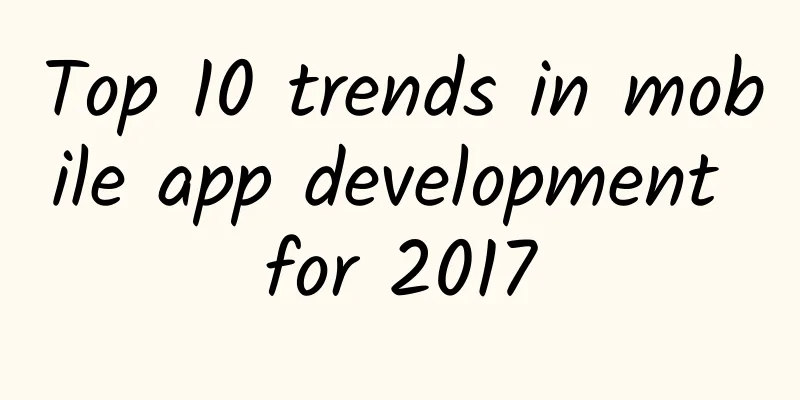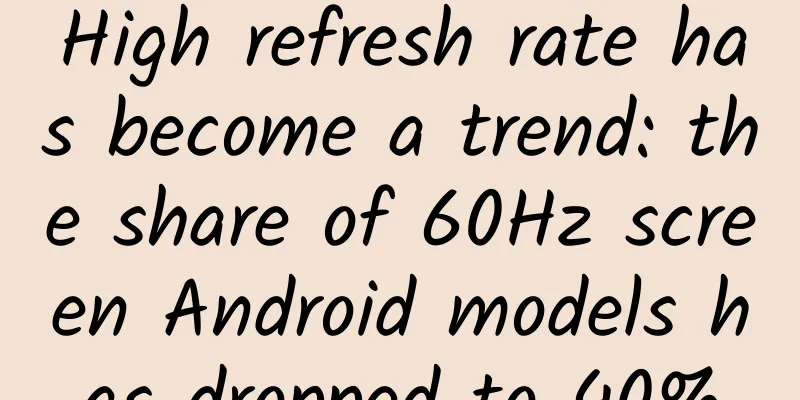Emergency consultation: Who sealed Shen Gongbao's throat?

|
The total box office of the movie "Nezha: The Devil Boy Conquers the Dragon King" successfully entered the top 10 of the global box office history. When watching the movie, did you pay attention to Shen Gongbao, who sometimes stutters when speaking? The wronged Baobao has really practiced how to speak countless times in his mind, but when he comes to speak, the words just swirl on the tip of his tongue, as if the pause button has been pressed, and they are stuck in his throat. If there is a hospital in heaven, who will save him? (Photo source: China National Radio) Finding the truth: Emergency consultation for stuttering In order to help Shen Gongbao, we invited his creator, director Jiaozi. At the recent film meeting, director Jiaozi carefully described to us the story behind Shen Gongbao. It turned out that the young Shen Gongbao had studied in Kunlun Sect, and he had always been discriminated against and bullied by his master and fellow apprentices. So in order to survive, he was always living a life of humiliation and frustration. Every time he encountered an opportunity to advance to the next level of cultivation, it was not his turn, which made the aggrieved Baobao very unconfident. Even every time he wanted to speak, he was either interrupted by his fellow apprentices or ignored by his master. After understanding the patient's medical history, we may be able to give a differential diagnosis. Shen Gongbao should have suffered from psychogenic stuttering. Image from "Nezha: The Devil Boy Conquers the Dragon King" Stuttering is a speech disorder, commonly known as stuttering. Generally speaking, there are three main types of stuttering: developmental, neurological, and psychogenic. This "temporary malfunction" of the language system is far more complicated than we think. Modern neuroscience has found that stuttering is not a simple "slip of the tongue", but a subtle imbalance of the brain's symphony orchestra. In a healthy brain, language generation is like a carefully orchestrated symphony: the "basal ganglia" plays the role of conductor, coordinating the rhythm of Broca's area (language encoding) and the motor cortex (pronunciation execution); the "cerebellum" calibrates the duration of each syllable like a metronome; the "prefrontal lobe" is responsible for real-time monitoring and timely correction of errors. But when stuttering occurs, this system seems to encounter "signal interference" - functional MRI shows that the right inferior frontal gyrus of stutterers is abnormally active when speaking, like a second conductor who suddenly breaks in and disrupts the original rhythm. The deeper secrets are hidden in the ocean of neurotransmitters. A 2019 study in Nature magazine revealed that the "dopamine-glutamate balance" in the basal ganglia of stutterers is often out of balance: excessive dopamine "accelerates" the generation of language plans, while insufficient glutamate causes the motor execution "brakes" to fail, causing words to collide like a runaway train. What's more interesting is that the "mirror neuron system" plays a dual role in this process - when the patient is alone, the language is fluent, but once the patient perceives the gaze of others, the system will be overactivated, making the originally automatic speech suddenly "require manual operation." Among developmental, neurological and psychogenic stuttering, psychogenic stuttering is relatively rare and accounts for the least. But in fact, this "panic language jam" also hides the survival wisdom given by biological evolution. Experiments at Cambridge University found that stutterers will involuntarily activate the "ancient mammalian defense response" under high pressure - the tension of the throat muscles instantly increases by 42%. This is the remnant of the instinct of ancient humans to suppress vocalization when facing wild beasts. Because only in this way can our ancestors escape from the predation of saber-toothed tigers. Nowadays, jungle life is no longer there, and the psychological pressure of modern society has caused this alarm system to mistakenly identify the PPT report site as a "saber-toothed tiger attack" in the urban steel jungle. Let us hold the page turner in our hands, but we don't know how to speak. Frozen Language: Decoding Psychogenic Stuttering In a Starbucks coffee shop in Shanghai, Dong Zhi (pseudonym), who was communicating with colleagues about a project, suddenly stumbled and didn't know how to express himself. The 31-year-old programmer had not rested for nearly 4 days for this project. His lips trembled slightly, as if frozen by invisible frost, and those clear code terms broke into intermittent syllables in his throat. This scene is not fictional, but a description that appears from time to time in the clinic of Shanghai Mental Health Center. As bystanders, we are witnessing a special phenomenon of language freezing - psychogenic stuttering caused by long-term psychological trauma, depression and other reasons. Coincidentally, Alice (pseudonym), a sales specialist at a foreign company in Beijing, got stuck on a syllable in her report, and her fingers unconsciously left sweat stains on the projector remote control. This scenario is evolving from an individual phenomenon to a collective dilemma. The World Health Organization's 2023 report shows that the incidence of language disorders caused by psychological factors has increased by 240% compared with ten years ago, of which the proportion of urban people aged 25-35 is as high as 68%. Language neuroscientists have found that long-term repressive environments can cause language "short circuits" in the brain. When the amygdala is constantly in a state of high alert, the neural connection between the prefrontal lobe and Broca's area will be functionally broken. Just like a rubber band that has been repeatedly pulled and loses its elasticity, the synapses of the language center gradually become blunt under chronic stress. Brain imaging experiments at the University of Tokyo showed that when patients with psychogenic stuttering perform language tasks, the abnormal activation of the right inferior frontal gyrus is 3.2 times that of ordinary people. This language disorder presents a unique "situational selectivity". Patients may be fluent in daily conversations, but experience language freezing in specific stressful situations (such as work reports and social gatherings). A follow-up study by the London Speech Rehabilitation Center found that 78% of cases had "anticipatory anxiety", and patients began to experience physiological language inhibition 72 hours before the event. Frozen vocal cords: Stress breaks down language neural network Different from aphasia caused by acute psychological trauma, psychogenic stuttering is often caused by chronic stress. This chronic damage is like a bug encountering dripping resin. The first drop may not be fatal, and may fall on the wings and feet, and slowly move to the abdomen and chest. In the end, the "language neural pathway" bug is wrapped in layers of resin transformed by chronic stress. A follow-up study by the National Institutes of Health in the United States revealed that psychological depression lasting more than 6 months can cause the density of dopamine receptors in the basal ganglia to decrease by 41%, and this key area responsible for language fluency loses its coordination ability. Just like a symphony orchestra loses its conductor, the movement of the lips, teeth, throat and tongue loses precise coordination. Nowadays, emo has become an important label in society, regardless of age, gender and occupation. When emo appears as the most common negative emotion, the "emotional brain" continues to send danger signals, and the language output of the "rational brain" will be forced to be reduced. This is a game between the limbic system and the prefrontal lobe in the brain. The University of Zurich found through fMRI scans that when patients are blocked in language, the blood oxygen level in the anterior cingulate cortex drops by 27%, and this area responsible for error monitoring prematurely activates the "fuse mechanism". Not only emotional factors, but also cognitive overload of social roles can lead to speech disorders. We always hear young people complain that they want to live a simpler life, don't want to get married, don't want to have children, don't want to go to work, but in fact they just don't want to enter an overly complex social environment. Changes in social development and various high standards often require us to play various social roles well. Sociolinguistics research at Seoul National University in South Korea shows that people who need to frequently switch workplace roles have a language error rate that is 5.8 times that of those with fixed roles. Just like a computer running multiple programs at the same time, the brain consumes too many resources in role switching, which can cause the language processing process to collapse, and may cause us to unexpectedly develop psychogenic stuttering. The return of spring: the possibility of rebuilding the language system Just like we treated Shen Gongbao this spring. Neural plasticity and the guiding role of psychotherapy will open a window of hope for the recovery of psychogenic stuttering. A breakthrough experiment at Charité Medical Center in Berlin proved that through directional sound wave stimulation combined with cognitive training, the damaged language neural network can rebuild 60% of its functional connections within 12 weeks. This repair is like the melting of glaciers in spring, allowing the frozen language to flow again. From the perspective of psychotherapy, cognitive reconstruction has a very obvious effect on psychogenic diseases. The core of cognitive behavioral therapy (CBT) for treating psychogenic stuttering is to break the vicious cycle of "anxiety-stuttering-shame", and its operation is like installing a "language anti-collapse system" for the brain. Transforming stuttering from a "defect that needs to be eliminated" to a "manageable language characteristic" is like teaching surfers in a typhoon to dance with the waves. Data show that 12 weeks of CBT intervention can reduce social avoidance behaviors related to psychogenic stuttering by 67%, and the subjective pain index of language fluency by 82% - after all, when the brain stops judging itself, the vocal cords can regain freedom. At the same time, summarizing previous psychotherapy, it is often more important for patients to recreate their living environment than language training. The language rehabilitation project of the National Hospital of Singapore devotes 70% of its energy to stressor management, and by reconstructing the patient's life scene, it increases language fluency by 3 times that of traditional therapy. Just like changing the soil for a withered plant, when the psychological ecological environment improves, the flower of language will bloom again. In addition, with the advent of the era of intelligent medicine, more and more black technologies such as brain-computer interface technology and AI feedback technology are enabling the diagnosis and treatment of psychogenic stuttering. The "language mirror therapy" developed by Waseda University in Tokyo is like installing a new operating system in the brain, gradually covering the faulty language program. Through virtual reality technology, patients can observe their own fluent expression, combined with neurofeedback training, successfully helping 82% of moderate psychogenic stuttering patients restore their workplace communication ability. Now the severe winter has passed, and spring has come to revive. Standing at the intersection of neuroscience and psychology, we wiped off the last floating snow when the ice was frozen, and finally saw clearly that psychogenic stuttering is not a malfunction of the human body, but a distress signal from the entire life system. When patients learn to coexist with stress in a new way, and when the social environment begins to pay attention to the psychological ecological balance, those frozen languages will eventually flow again under the sunshine of understanding. Just like the explosion of life after the Ice Age, the language ability that has been tested by the cold winter may evolve into a more powerful form of expression. Just like in the movie, when Nezha returned to Chentangguan to rescue Li Jing and his wife and asked Shen Gongbao, "Shen Gonggong, why are you here too?", Shen Gongbao, who usually stutters, was out of character, with confidence in his student Ao Bing, and with all his grievances and anger, he shouted "Shen Gongbao"! Of course, as Director Jiaozi said, "The movie hopes to break through stereotypes, and it will not be black and white. Our Shen Gongbao also wants to make it more humane." I believe that Shen Gongbao, who has experienced the cold winter and ushered in spring, will also bring us more laughter and touching in "Nezha 3". Scientific review: Xu Guangming, President, Chief Physician, and Doctoral Supervisor of Tianjin Anding Hospital Sun Yifei, associate professor and attending physician at Hebei Medical University, vice president of Hebei Science Writers Association |
<<: Money is gone with a touch? Is the NFC function of mobile phones really that scary?
Recommend
What are the functions of the Foshan bottled water mini program? How much does it cost to develop a mini program for delivering bottled water to your door?
Drinking water is an essential part of our daily l...
Two key points for Kuaishou promotion and traffic generation!
Kuaishou started to build an education vertical c...
Analysis of community group buying operation logic!
Preface: At present, with the entry of giants suc...
How to promote traffic and acquire customers on Zhihu
I deeply agree with what Hua Ye said: "Zhihu...
It’s not enough to just capture the carbon, you also have to “lock it up”!
You know, it is difficult to preserve the gas in ...
Bidding promotion: How do bidders optimize the average price of keywords?
Here, the editor has compiled a wave of common bi...
Fuyu SEO Training: How to conduct in-depth analysis of the website through SEO thinking?
We know that when optimizing a website, our own o...
Example analysis: How does Love Bank APP achieve user fission?
The user fission of Love Bank is very ingenious. ...
With a range of 530 km, equipped with Tencent car networking, and 1.32 times the subsidy, Trumpchi GE3 530 starts pre-sale
With the gradual decline of new energy vehicle su...
A 600 million light-year-long cosmic void, new findings on dark energy: the relationship between void mass and light!
The Dark Energy Survey (DES) uses patterns in mac...
Jia Yueting jokes about the gap between LeTV and BAT behind the scenes
The 2016 IT Leaders Summit with the theme of &quo...
The differences between Windows 10 versions: the most powerful one you've never guessed
Windows 10 has been released for a year and a half...
What is the future direction of SEO? In which directions can SEO develop?
I have become more and more lazy recently. I am t...
About Git's Undo Command: How to Undo Everything in Git
One of the most useful features of any version co...
Does the Zhaoqing Mini Program Mall need to apply for a business license?
Can an e-commerce business license be used to ope...









